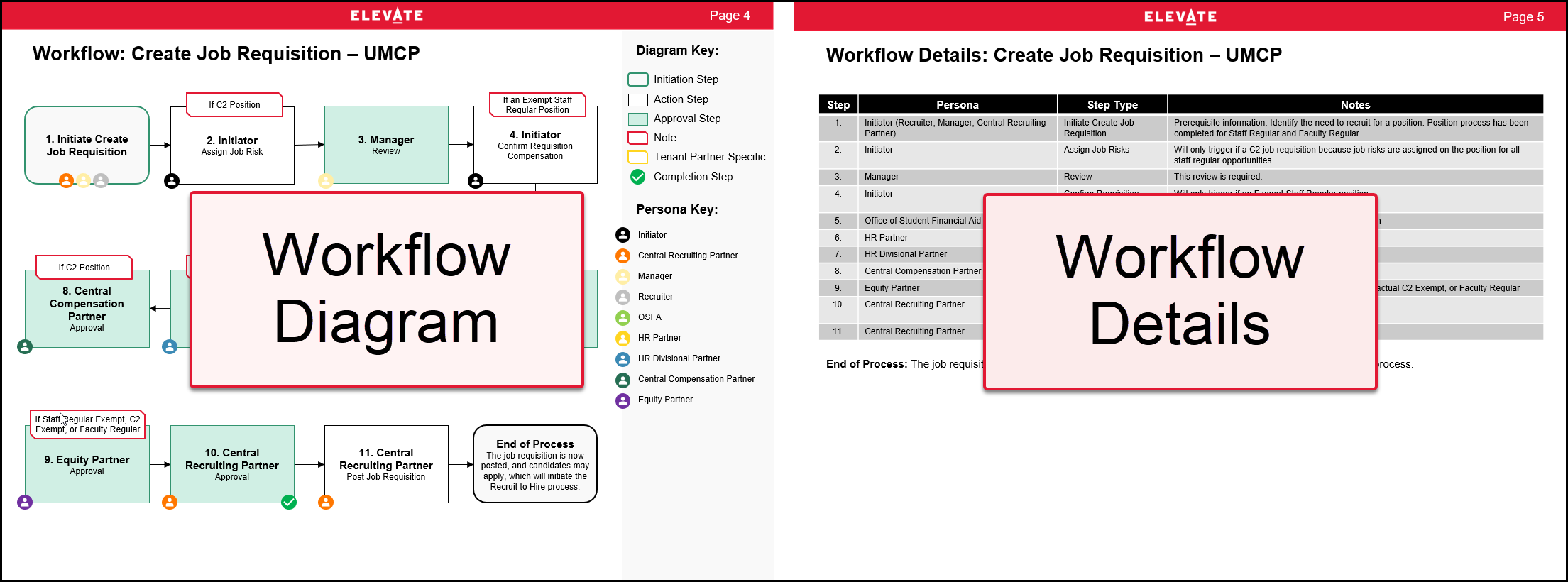Business Process Workflows
Business process workflows provide a written description and visual map of key processes within Workday.
Workflow Information
Business process workflows help you visualize a process in more detail, from the initiation step to the last step, of a business process. Each workflow identifies which security role(s) completes each step and any conditions that determine if a step is triggered or not in Workday. You can learn more about condition steps and more through the Frequently Asked Questions.
Each workflow has two components. There is a workflow diagram which offers a visualization of the process. There is also a corresponding table with workflow details. These tables can contain more information than is provided in the diagrams, like any perquisite information for the Initiation step, for example. If you are looking for a version with only the tables, please see the documents that contain "Text Only Version" in the name.

